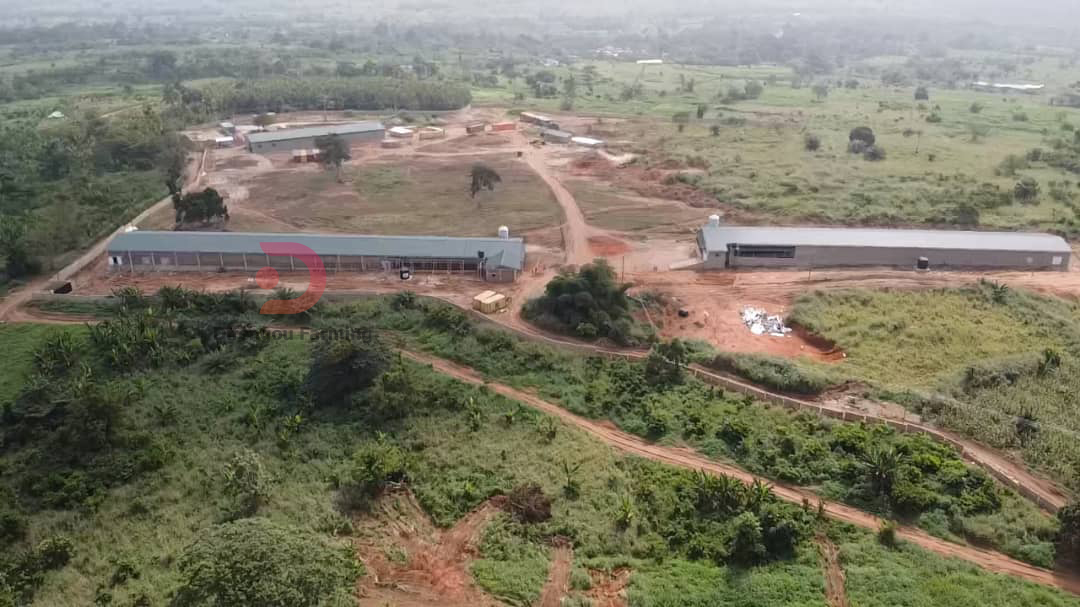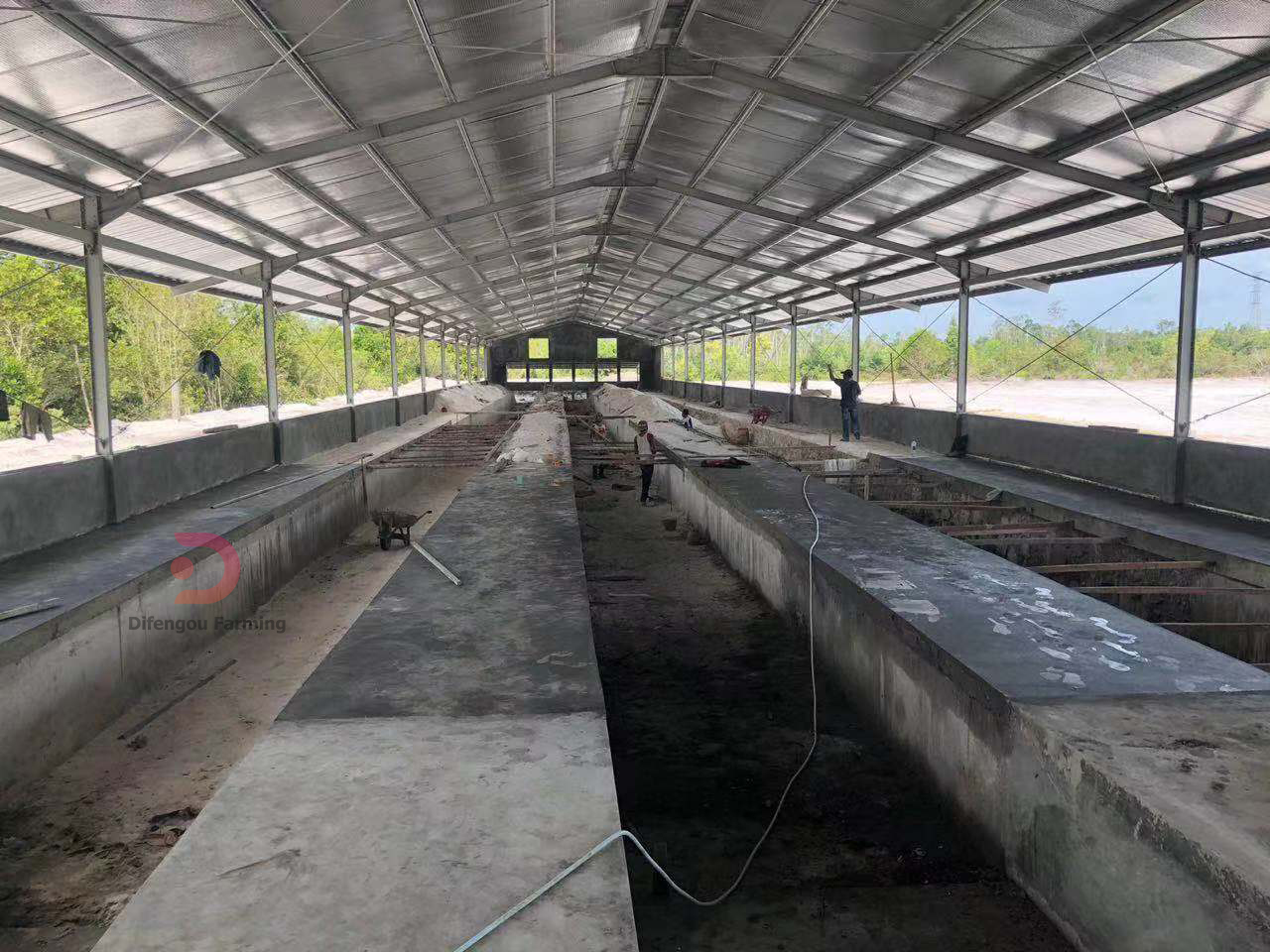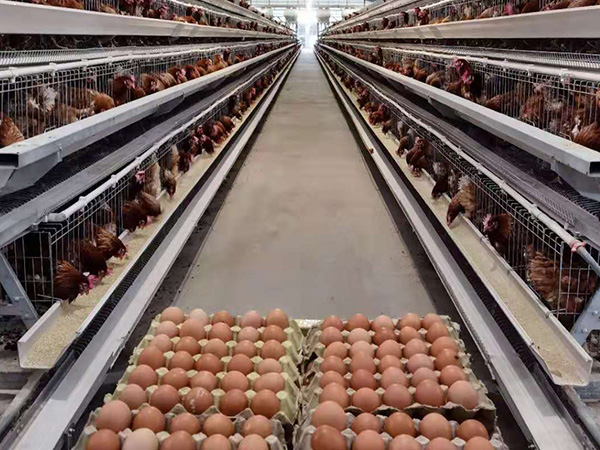
A type layer battery cage
- Brand:Difengou
- Color:Customized
- Size:Large, Medium, Small
- Package:Container
- Service life:Over 20 years
1. What is A type layer battery cage?
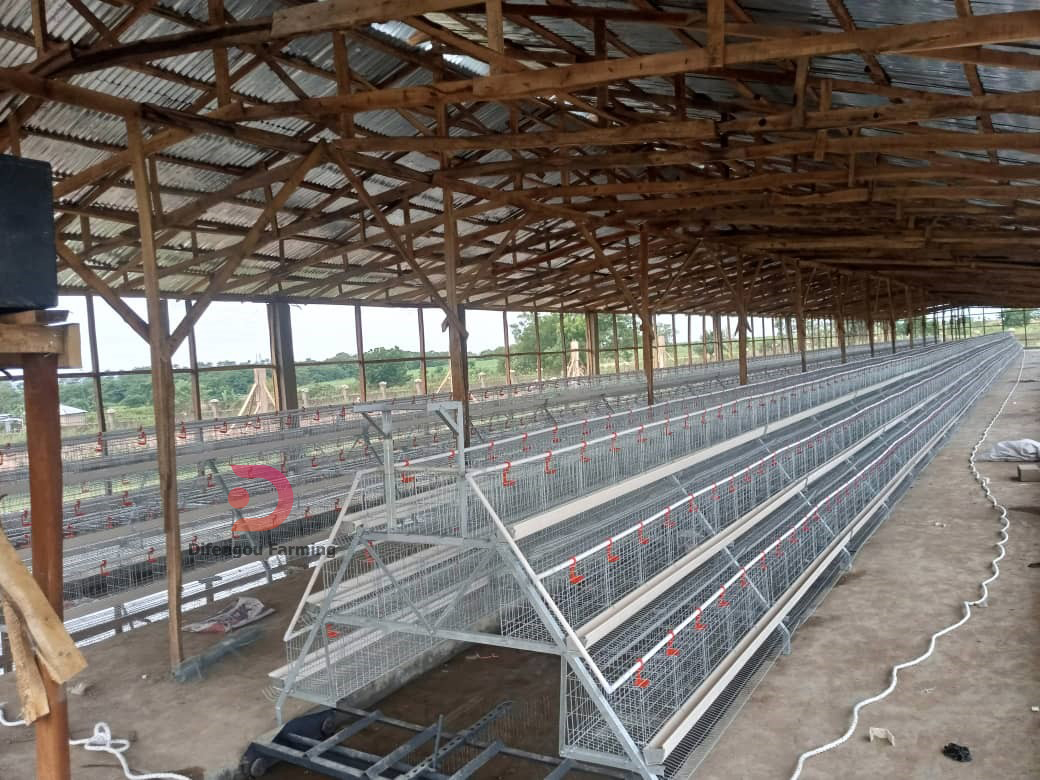
“In total, there are 3.84 billion laying hens worldwide. Within this data, 440 million hens are non-caged (constituting 11.6%), 3.33 billion are caged using the layer battery cage (constituting 86.7%), and approximately 130 million are categorized as other hens (constituting 1.7%).
Caged and non-caged ratio: The majority of global laying hens (approximately 87%) are using the layer battery cage. This indicates that, in 2023, cage systems dominated the global egg-laying poultry farming.”
“In Nigeria, the largest egg-producing country in Africa, out of the 45 million laying hens, 58% are raised on the ground. Correspondingly, the proportion of non-caged indoor laying hens in Africa is also the highest, reaching 36.2%, significantly surpassing Europe’s 20.7% and North America’s 18.0%.”
Africa is the continent with the highest population growth rate globally. As of 2022, the total population of Africa, approximately 1.427 billion, has surpassed that of China. According to the United Nations ‘World Population Prospects 2022,’ it is projected that sub-Saharan Africa will contribute to over half of the world’s new population additions by 2050 and is expected to surpass East Asia and South Asia to become the most populous region by 2070.
In the future, Africa will play an increasingly significant role in global population size and distribution, profoundly influencing the international political and business environment. Looking at the global perspective, only Africa’s annual population growth is on the rise.”
With the increase in Africa’s population and improvement in living standards, there may be a sharp rise in demand for high-quality, protein-rich egg products. To meet this surging demand, agricultural production may need to undergo scaling, standardization, and technological advancements. The standardization of layer battery cage systems, aimed at improving production efficiency and increasing egg output, is seen as the sole pathway to meeting the demands of a growing population.
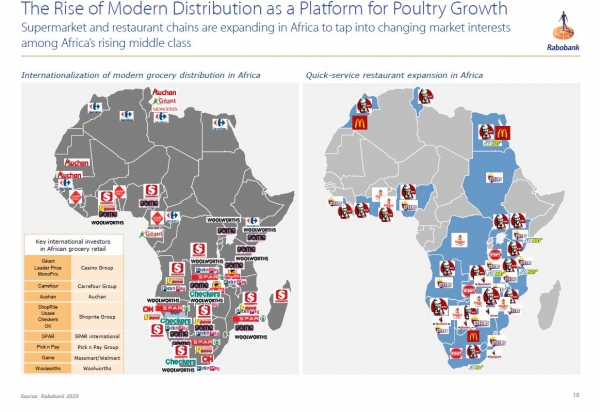
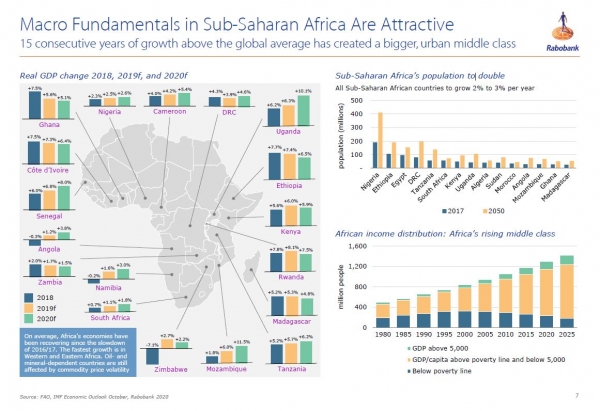
Africa population rise and Africa market poultry egg needs
3. Key features of layer battery cages include:
Cage Structure: The cages are typically made of anti-corrosion and anti-rust galvanized steel with over 20 years of service life and are designed to house multiple hens in the cages for easy management. Each cage has partitions to separate individual hens and So farmers can manage the layers easily.
Tiers: The cages are arranged in multiple tiers, often in a stack, to make efficient use of vertical space within a poultry house. This vertical arrangement helps maximize the number of birds that can be housed in a given floor area. It will save the construction cost and land size.
Feeding and Watering Systems: The cages are equipped with systems for providing feed and water to the hens. This is often automated to ensure a consistent and controlled supply of food and water.
Egg Collection: The design of the cages facilitates easy collection of eggs. Eggs typically roll onto a conveyor belt or tray for convenient collection by farm workers. It will make the egg clean and reduce the break rate to the lowest level.
Manure Removal: A system is in place for the removal of manure to maintain cleanliness in the poultry house. This may involve the use of belts or scrappers to collect and remove droppings from the cages. Manure removal systems help maintain a clean and hygienic environment, improving air quality within the layer house
Ventilation and Lighting: Proper ventilation and lighting systems are essential to maintain a healthy environment for the birds. Adequate ventilation helps control temperature and humidity, while proper lighting conditions stimulate egg production.
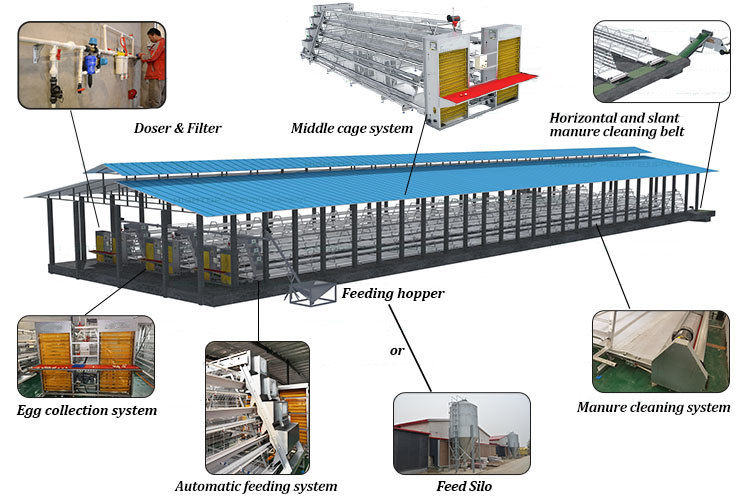
4. Complete set of A-type layer battery cage
The most basic Layer cage includes the following parts:
Layer battery cage body: Cage mesh, cage frame, feeding trough (put the feed into the feeding trough manually and the chicken eats from the feeding trough)
Layer battery cage drinking line: Water pipe and tank, nipple drinker (The water will flow from the water tank through the water pipe to the drinking nipple, due to the red and yellow color of the nipple, layers will be attracted to peak at the nipple to drink the water)
Layer battery cage installation kits: Screws, water pipe connector, water pipe hook, feed trough connector, feed trough head, and end plastic blocker.
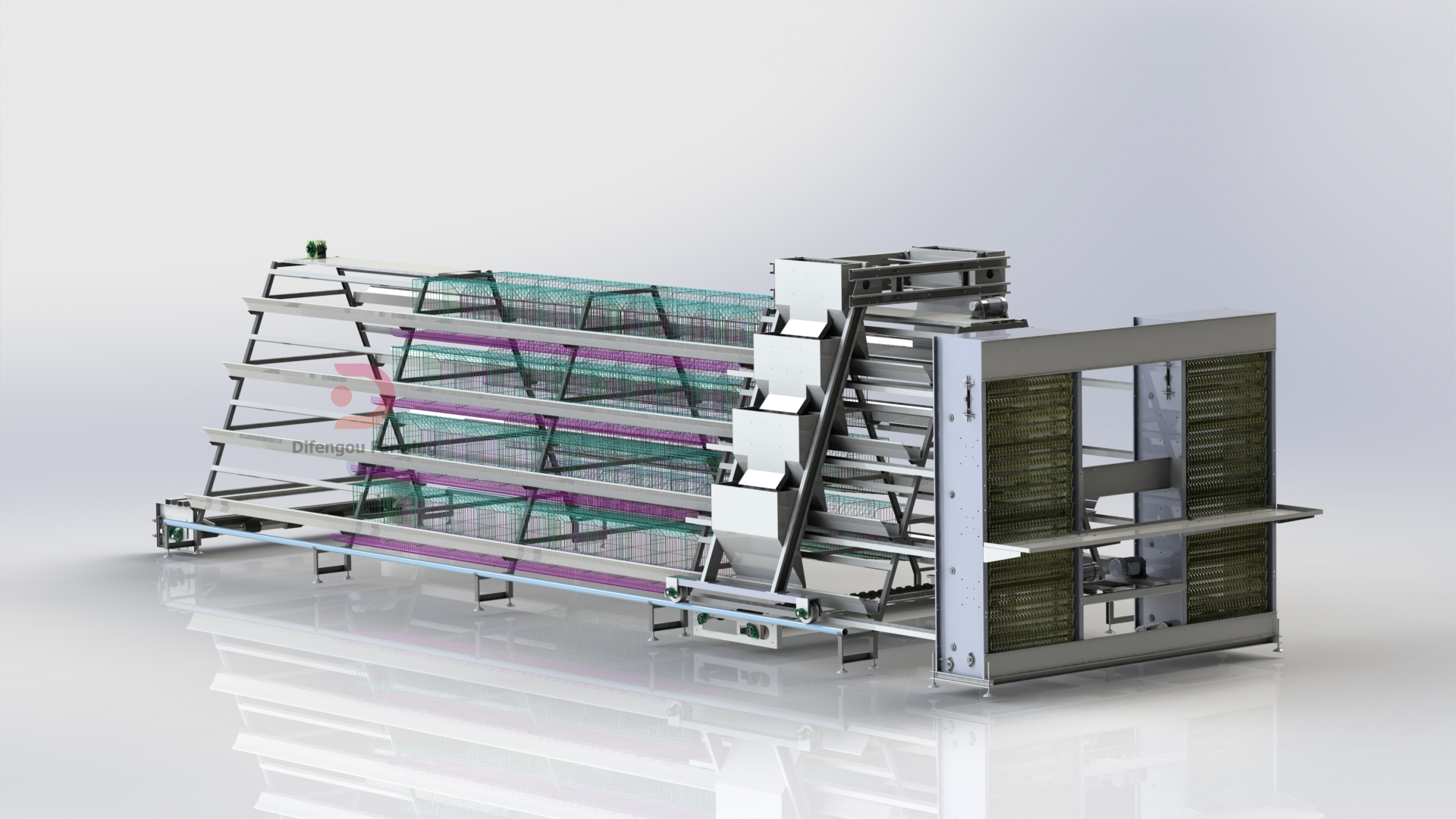
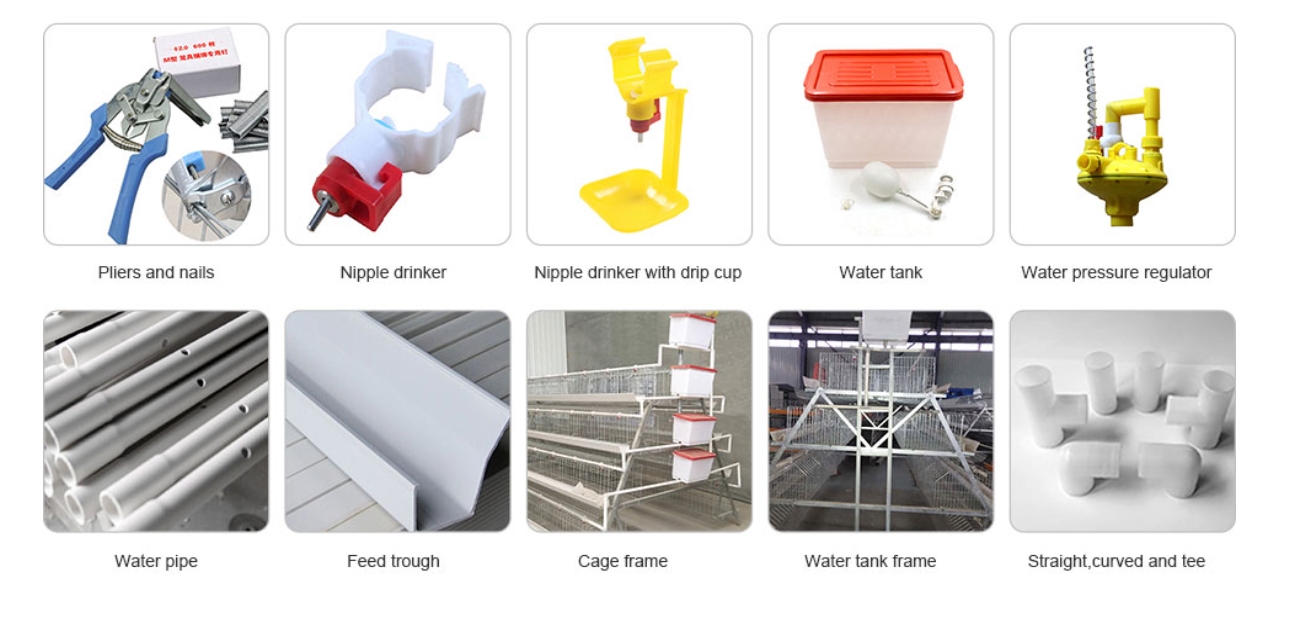
| A type layer chicken battery cage specification | ||||
| Type | Model | Birds Qty/Door | Birds Qty/Set | Specification |
| A type | 3-Tier 4-Door | 4pcs | 96 | 1950*350*380mm |
| 3-Tier 5-Door | 3pcs | 90 | 1950*350*380mm | |
| 4-Tier 4-Door | 4pcs | 128 | 1950*350*380mm | |
| 4-Tier 5-Door | 3pcs | 120 | 1950*350*380mm | |
| 3-Tier 5-Door | 4pcs | 120 | 1950*460*420mm | |
| 4-Tier 5-Door | 4pcs | 160 | 1950*460*420mm | |
6. The application of layer battery cage :
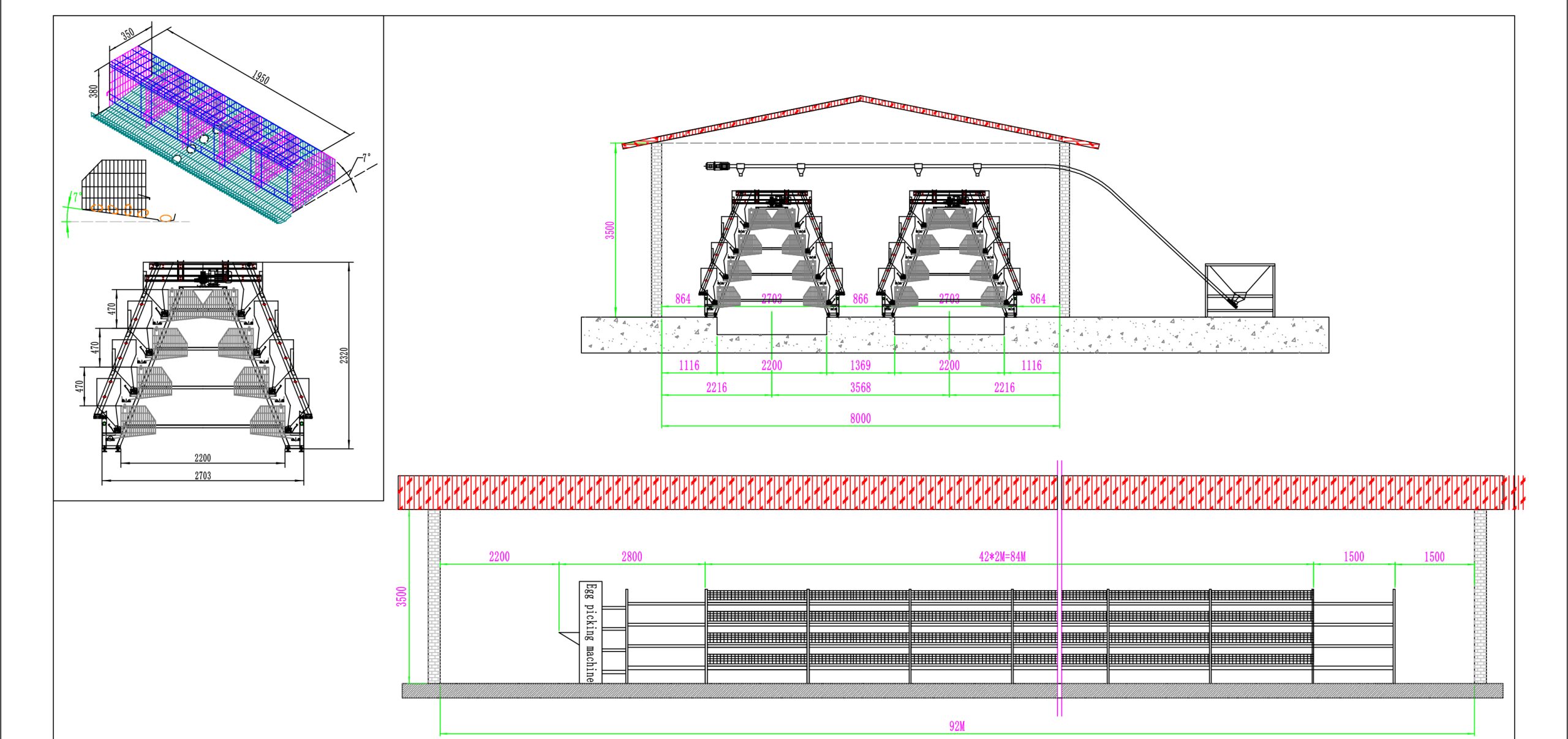
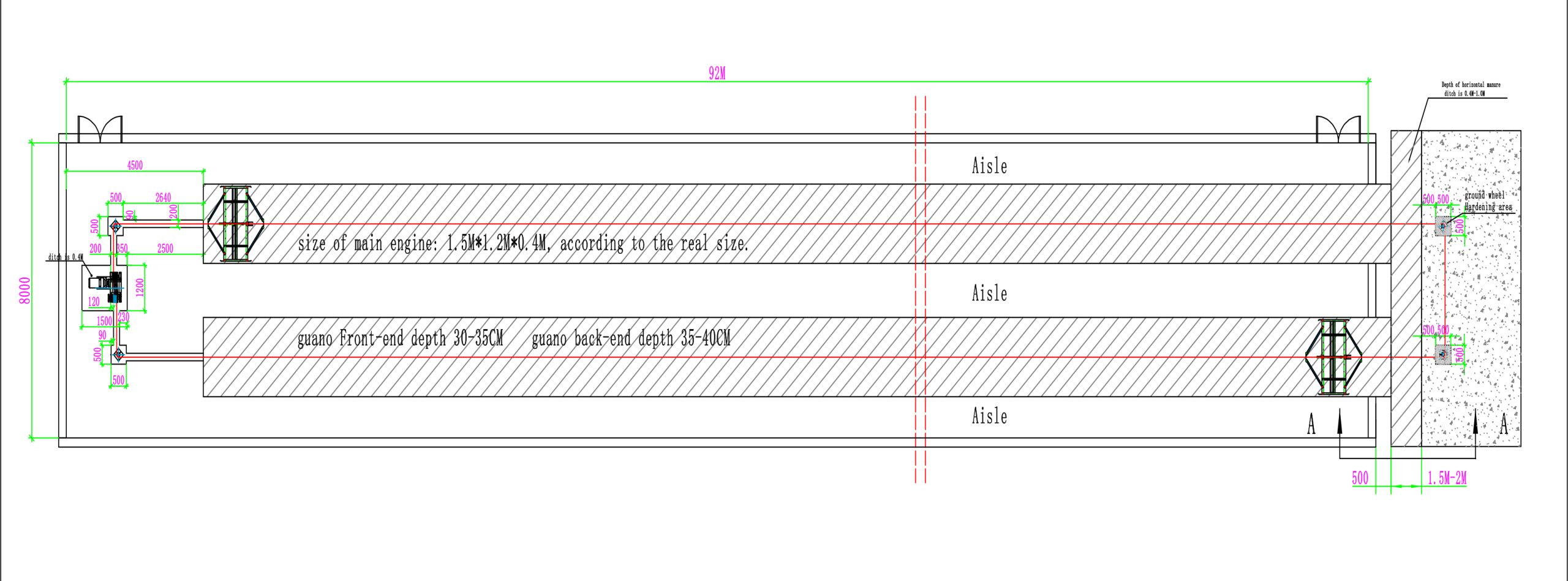
2. How many layers do you want to start with, do you have experience in poultry farming?
Like 1,000 layers, 5,000 layers, or 10,000 layers above?
3. When will be the time for you to plan to build the layer poultry farmhouse?
